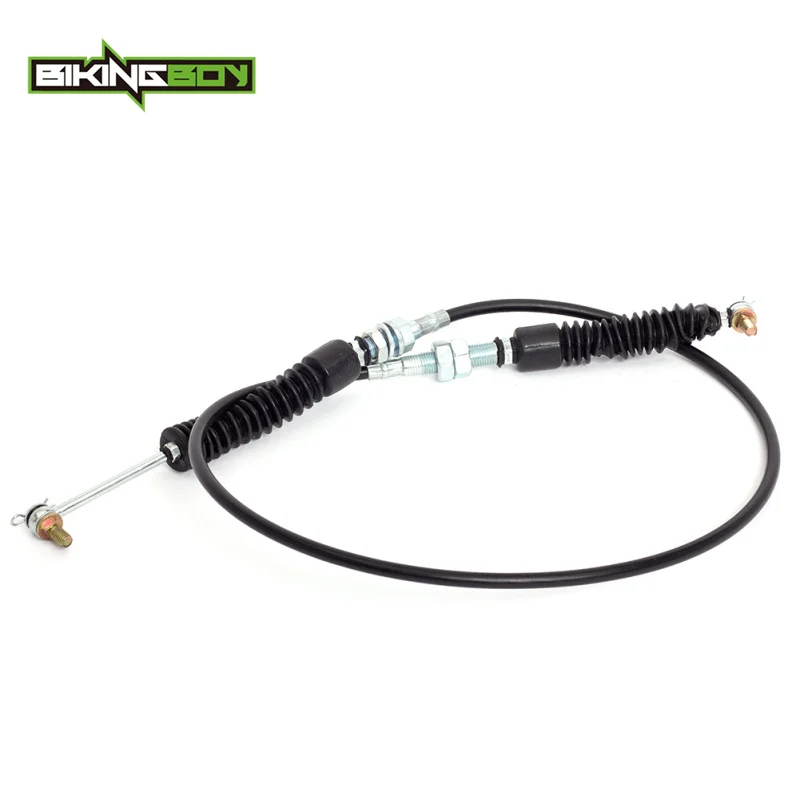VMC Chinese Parts $ 27.95
VMC Chinese Parts $ 32.74
VMC Chinese Parts $ 8.20
VMC Chinese Parts $ 15.34
VMC Chinese Parts $ 10.94
VMC Chinese Parts $ 32. 95
VMC Chinese Parts $ 24.20
Parts Unlimited $ 49.99
Sold Out
Parts Unlimited $ 11.95
Sold Out
VMC Chinese Parts $ 10.75
VMC Chinese Parts $ 10.18
VMC Chinese Parts $ 27. 50
50
Parts Unlimited $ 59.99
VMC Chinese Parts $ 11.28
VMC Chinese Parts $ 13.20
Parts Unlimited $ 61.95
Sold Out
Parts Unlimited $ 64.99
Sold Out
VMC Chinese Parts $ 10. 94
94
VMC Chinese Parts $ 12.95
Troubleshooting an ATV that won’t go into gear or won’t shift gears can be quite complicated, but not always. Whether you can address the issue on your own depends on the severity of the problem and your mechanical skill level.
ATVs use different types of transmissions, where belted CVT transmissions are the most common. The possible causes and the steps required to solve the problem depend on the type of transmission your ATV has.
This post covers some of the most common causes if your ATV doesn’t go into gear. It is meant to guide where to begin your troubleshooting, not as a complete repair guide for all ATV transmissions.
The service manual for your specific brand and model will provide more detailed troubleshooting procedures for your transmission issues.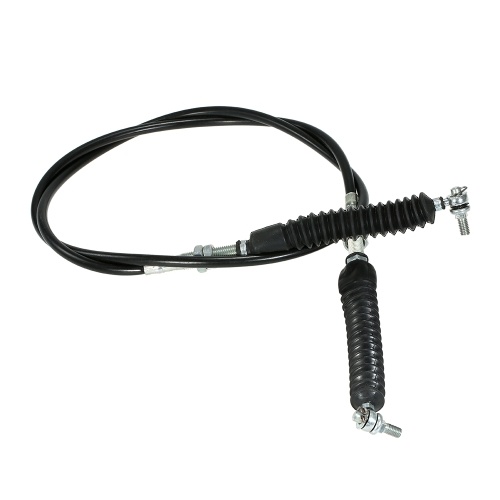
Please note that it’s easy to make a transmission issue worse if you don’t know what you are doing. Some of the repairs require special tools such as a clutch puller or a clutch disassembly tool. If the repair seems intimidating to you or you do not have the right tools, it is recommended that you take the bike to a dealer technician.
Page Contents
We recommend that you begin the troubleshooting by testing whether you can shift gears when the engine is not running. This initial test allows you to narrow down the possible culprits of your gear-shifting issue.
If you can shift gears with the engine off, you know that the gear-shifting mechanism, as well as the inside of the gearbox, most likely works fine.
Gear shifting problems that are only present when the engine is running are usually clutch- or belt-related (Step 3) or caused by a high idle (Step 2). You may find that the bike wants to creep or move forward when in gear at idle. But even without creep, the problem may be with one of these components.
But even without creep, the problem may be with one of these components.
If you are, however, unable to shift gears with the engine off, we recommend you jump straight down to Step 4.
Many ATVs come with an automatic clutch that engages when you apply throttle, and the clutch speeds up. The same principle applies whether you have a wet disc clutch or a dry clutch, as you find on a belted CVT transmission.
If the ATV, for some reason, idles higher than it’s supposed to, it may cause the clutch to engage slightly, putting a small but constant tension to the metal gears inside the gearbox. This pressure on the gears makes the ATV very hard to shift.
Most ATVs should idle around 1100-1200RPM. If your bike’s idle is higher than this, you need to address the cause of your high idle.
For carbureted ATVs, there will be an adjustment screw to set the idle. Your user manual will provide the correct setting for your bike.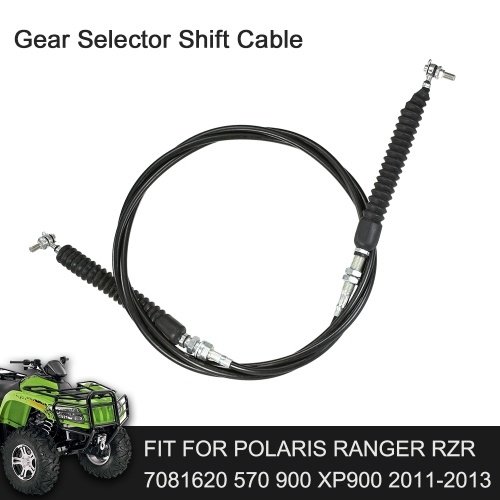 Adjusting the idle on a fuel-injected ATV is usually a job for a mechanic.
Adjusting the idle on a fuel-injected ATV is usually a job for a mechanic.
When idling, the primary clutch on a belted CVT transmission is supposed to spin freely without engaging (not pulling on the belt). This relieves the tension on the gearbox and allows you to shift gears.
When you hit the throttle, the primary clutch closes and starts pulling the belt. The belt makes the secondary (driven) clutch spin, which creates tension between the gears inside the gearbox.
This is how a CVT transmission works:
But when the transmission is not tuned correctly or has a mechanical issue, it may be engaging and spinning the secondary clutch even at idle.
To troubleshoot an issue like this, you need to remove the belt cover to inspect the clutches and see how they behave when the engine runs, both at idle and when revving in neutral.
Please note that the clutches will be spinning at high speeds.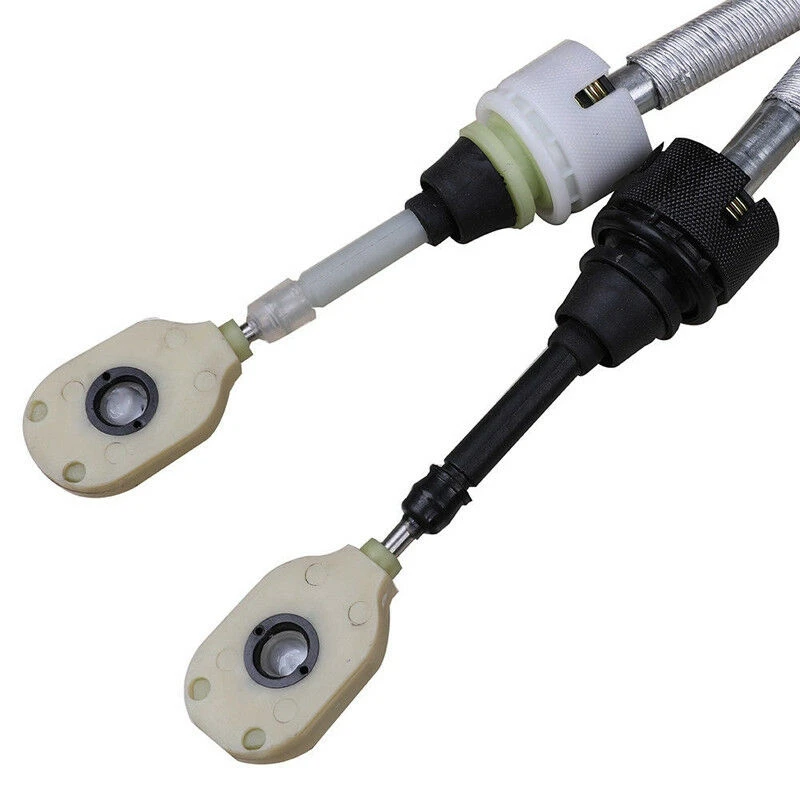 Keep your hands and all loose objects clear of clutches to avoid potentially fatal damage.
Keep your hands and all loose objects clear of clutches to avoid potentially fatal damage.
If the primary clutch is packed with dirt, it may bind or not open enough to release the belt. Now is a good time to pull the clutches for proper cleaning and service.
The springs inside a CVT transmission clutch may weaken over time, preventing the clutch from functioning as it is supposed to. Clutch springs are replaceable, but you may need special tools to pull and disassemble the clutch.
If the motor mount is bad or has come loose, the primary clutch may be out of alignment. Use a pry bar to see if you can lift the whole engine. You should barely be able to see the engine move, if at all.
The drive belt should ride in the clutch assembly center, not touching the primary’s two clutch sheaves. If it does rub against one of the sheaves, it will cause unwanted tension on the belt.
If it does rub against one of the sheaves, it will cause unwanted tension on the belt.
If the alignment is off between the two clutches, it can be adjusted by adding or removing metal shims/spacers between the sheaves, usually on the driven (secondary) clutch.
Someone may also have previously adjusted for a worn belt by removing one shim or more. When installing a new belt, you may need to add those spacers back to prevent binding, leading to gear shifting issues.
If the drive belt is worn too much, it will ride low on the sheaves, causing a slight creep.
We recommend that you only use OEM belts. There are aftermarket belts available that offer better performance and longevity at a smaller price. But slight variations in production tolerances can cause issues such as the clutch engaging too soon.
Aftermarket belts also use a harder compound to make them last longer, which may wear your clutch sheaves over time.
Remove the belt cover. If the belt is shredded, it may have gotten wrapped around the driven shaft, causing it to bind up.
Polaris ATVs with EBS (engine brake system) have components that may wear out in time. Inspect the EBS fiber washers (one on each side of the EBS bushing) on the primary clutch to see if they are worn out. If the washers are worn, the belt may not ride in the grooves as it should and instead ride one of the sheaves.
Some ATVs with engine brake systems have a primary clutch with a one-way sprag bearing, a so-called one-way clutch. It is supposed to spin freely in one direction and be locked in the other direction. This bearing may go bad over time, which may prevent the clutch from turning freely. It may be hard to tell if the bearing is ok; just a slight drag may cause shifting issues.
In this case, the problem is likely with the gear changing mechanism or the transmission’s internals.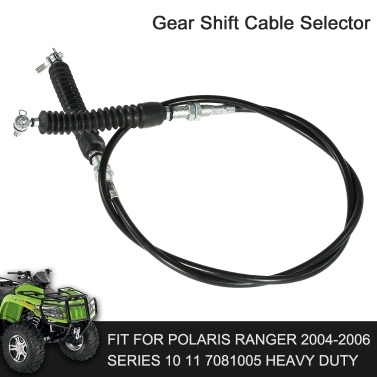 Begin by troubleshooting the externals as they are the most accessible.
Begin by troubleshooting the externals as they are the most accessible.
Some ATVs have adjustable gear linkage. If not adjusted correctly, the bike will not shift as it should.
On ATVs that has manual clutch transmissions, you should make sure that:
To test your gearbox for internal damage without splitting the case you can try this method:
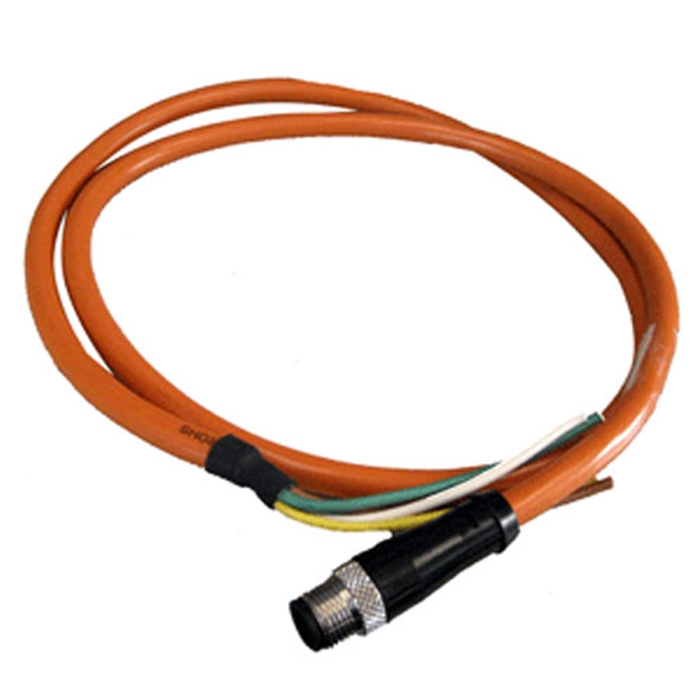
One of the most common issues one could be facing with a gearbox’s internals is having a worn or bent shift fork. The shift fork is what shifts the gears in place. If it is bent or worn, it can’t push the gears completely in place.
Some ATVs use an oil-sump wet clutch in combination with the dry clutches on the CVT belt transmission. You also have some Honda ATVs with hydrostatic transmissions that use oil to drive the ATV forward.
Here are a few things to check out whenever any of these types of ATVs won’t go into or shift gears.
Make sure the oil level is correct or the bike may not shift as it should.
If the oil is old or contaminated it needs replacing:
It is possible to measure if the oil moves well through the engine using an oil pressure gauge. If the pressure is weak, you may have bad seals and need to open the engine.
ATVs with an electric shifter, like the Honda AS models, uses an electric motor to shift through the gears.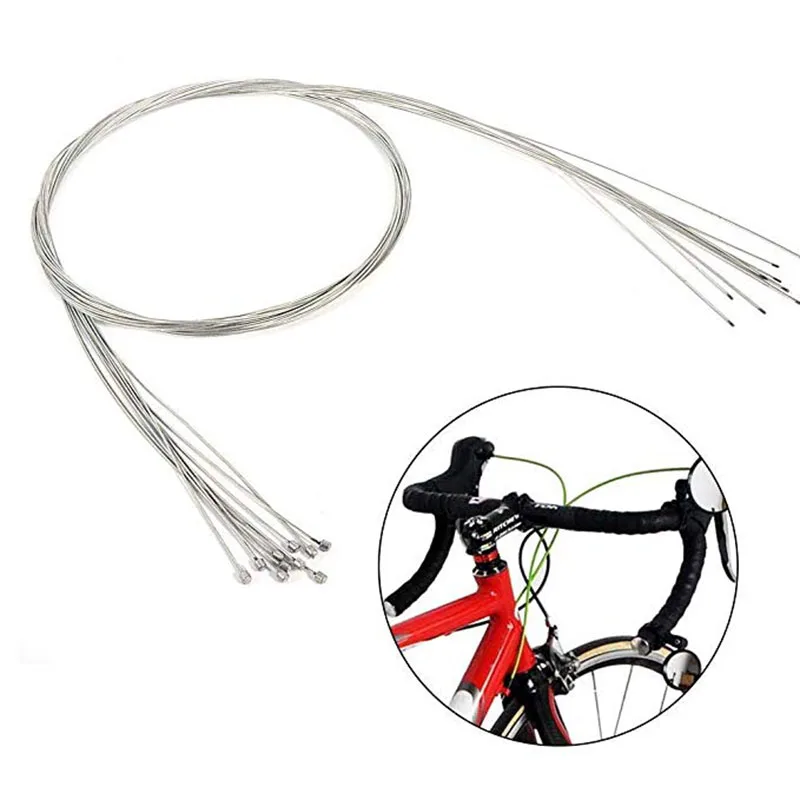 If the motor does not work, the bike will not shift gears.
If the motor does not work, the bike will not shift gears.
The only way to make it shift is by using the emergency shifter (a short-shifting shaft sticking out the left lower side of the engine, use the supplied gear change tool). If the bike shifts when using the emergency shifter, you need to address the shifter motor.
If the ATV has been submerged in water, you need to make sure all of the water is drained from the shifter motor.
Remove the motor. If the motor does not turn even when hooking it up directly to a battery, it may be burnt out and need replacing.
It is easy to forget that an electric-shift ATV needs electricity to shift. Make sure the battery is properly charged and in good condition.
Make sure the battery is properly charged and in good condition.
Related resources:
How to charge an ATV battery
How to troubleshoot an ATV battery that is not charging.
If you try to shift on an electric shift ATV, you may hear the shift motor moving, but it does not shift completely.
You may find that the problem is worse at colder temperatures. Fixing this issue is relatively easy. All you need to do is replace the old gummed-up grease with all-temperature, white lithium grease.
For the complete procedure, go to Hondaatvforums.net
Located on the carburetor, the Honda ES models have an angle sensor that tends to go bad. After replacing the sensor, make sure it is clocked correctly.
When this happens, there is usually no need to worry.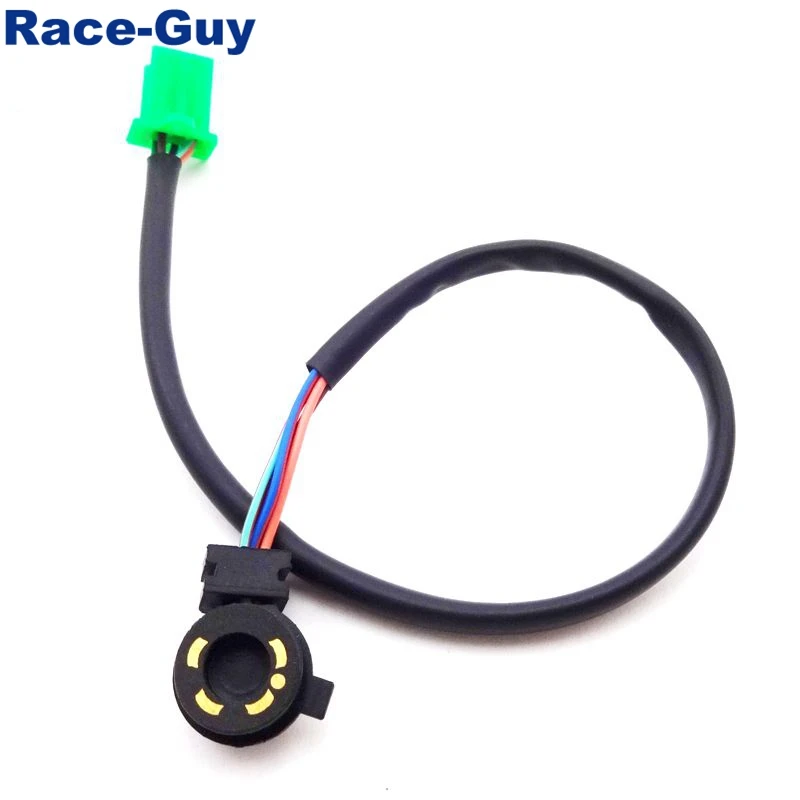 In fact, most ATVs are affected by this issue, some more than others.
In fact, most ATVs are affected by this issue, some more than others.
What happens is that the wheels must be rotated slightly for the gears inside the gearbox to sync (line up).
You may have noticed that this phenomenon gets worse when trying to shift in and out of “park” when standing on a hill.
The best way to avoid this is by applying the parking brake before putting the transmission in “park.” This way, the gears won’t bind up, and you will be able to shift in and out of gear effortlessly.
A winch is a must have for off-road riding. It allows you to pull a stuck ATV out of mud, water or deep ruts. Many models of CFMOTO ATVs and ATVs have a winch from the factory, for others it needs to be purchased separately. In this article, we will tell you how the winch works, what to look for when choosing, and also give useful tips on how to use it.
ATV winch is a drum with a cable. An electric motor is located on one side of the drum, and a gearbox on the other.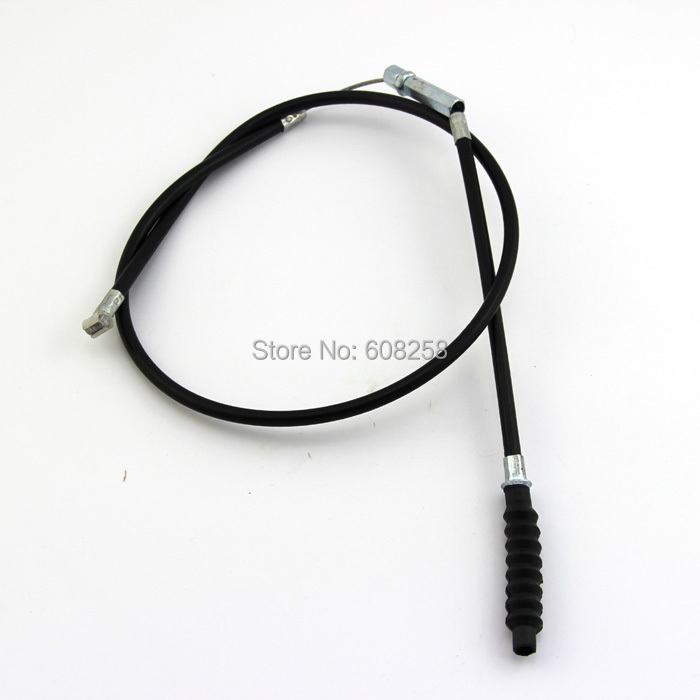 Rotation from the electric motor to the gearbox transmits a shaft that passes inside the drum. The gears of the planetary mechanism are located in the gearbox.
Rotation from the electric motor to the gearbox transmits a shaft that passes inside the drum. The gears of the planetary mechanism are located in the gearbox.
Reducer reduces speed and increases traction. The rotation from the gearbox is transmitted to the drum, which winds the cable, creating traction and gradually pulling out the stuck equipment.
One of the key parameters to consider when choosing a winch is traction. It determines the maximum weight of the load that can be torn off the surface. With each skein of the drum, the winch force decreases.
Thrust is measured in pounds (labeled on winches as lbs), 1 lb = 0.45 kg. The force depends on a number of features: the diameter of the drum, the number of wound turns, the power of the electric motor, as well as the gear ratio of the gearbox.
It is not always necessary to choose the most powerful and fastest winch: the more powerful the mechanism, the more difficult it is to handle.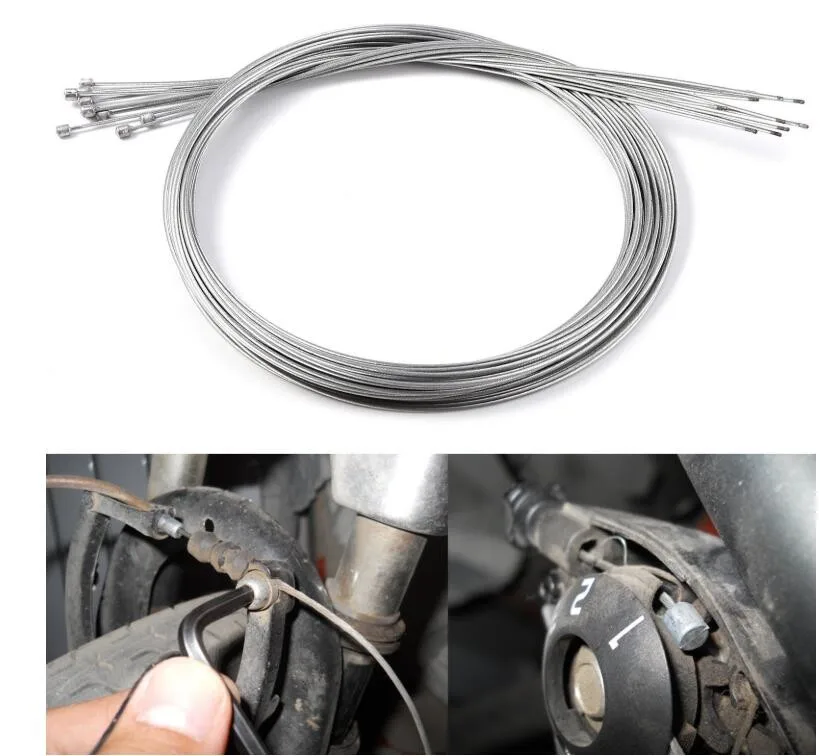 Beginners can harm equipment and even their health - it is not uncommon for a broken cable or a broken hook to cause injury.
Beginners can harm equipment and even their health - it is not uncommon for a broken cable or a broken hook to cause injury.
Matches the cubic capacity of the ATV:
Steel - cheap and easy. Requires work with gloves, not repairable. May cause injury if mishandled.
Synthetic - requires maintenance but is easy to use. It does not "shoot", and if the cable is damaged or torn, it can be braided on the spot.
Most experts believe that material choice should be based on personal preference: some riders lean towards steel over time, others towards synthetics.
The winch is installed on a special platform on the ATV frame.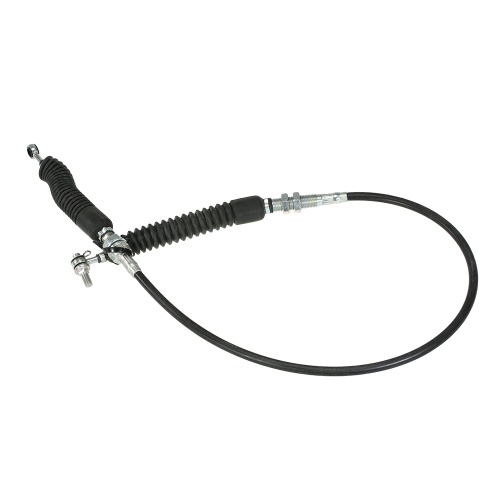 If there is no platform, you need to buy it and install it according to the instructions. The site has standard anchor points that fit classic winches up to 3,500 feet of pull.
If there is no platform, you need to buy it and install it according to the instructions. The site has standard anchor points that fit classic winches up to 3,500 feet of pull.
When choosing a winch, pay attention to the width of the drum:
With certain skills, you can modify the fasteners and install almost any winch - the main thing is not to make the fasteners “to break” and not to strengthen weak points. If the ATV is under warranty, it is advisable not to touch the frame and buy a regular winch.
Installing the winch is easy, but the connection will have to be tricky. To lay the wiring, it is advisable to remove the plastic from the ATV. The winch must be connected to the control unit and battery.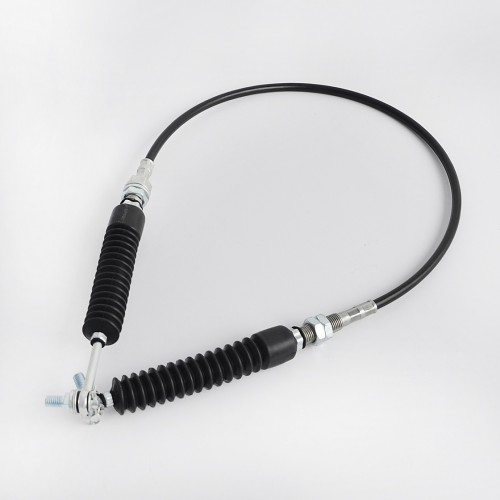 It is recommended to keep the power cable as short as possible to avoid current loss. All wires must be hidden in the corrugation so that they do not come into contact with the frame and are protected from moisture.
It is recommended to keep the power cable as short as possible to avoid current loss. All wires must be hidden in the corrugation so that they do not come into contact with the frame and are protected from moisture.


If you have any questions or would like further advice on purchasing, installing, operating and maintaining an ATV or ATV winch, please contact your nearest authorized CFMOTO dealer.
Dealers CFMOTO
Articles
02 Dec
Any wheeled vehicle - from a bicycle to a multi-ton truck - has a transmission in its device: a system that transmits rotation from the engine to the wheels. The operation of the transmission - and therefore the speed of driving - can be controlled by shifting gears.
Gear shifting is organized differently in each mode of transport. In the article below, we will tell you exactly how to shift gears on ATVs, and what gearboxes are found on such equipment.
Gearboxes for ATVs can be of two types:
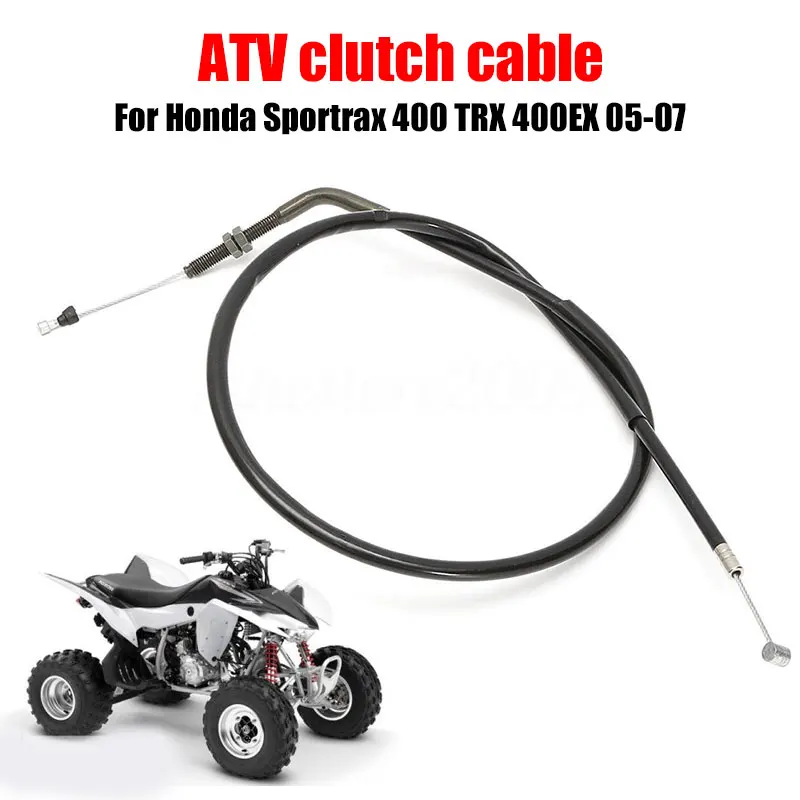 Similar to motorcycle gearboxes. They are put mainly on racing models, but in recent years they have also begun to be found on utility ATVs. They have a foot clutch or clutch with a lever on the steering wheel (in most cases it is), and a foot shifter. Manual transmission usually has 4 “forward” gears, neutral and reverse.
Similar to motorcycle gearboxes. They are put mainly on racing models, but in recent years they have also begun to be found on utility ATVs. They have a foot clutch or clutch with a lever on the steering wheel (in most cases it is), and a foot shifter. Manual transmission usually has 4 “forward” gears, neutral and reverse. Rare and mostly found in older models, but other variations can be found. For example - "automatic" with the ability to manually shift gears.
Manual ATVs are a little more difficult to drive (at least at first, until you get used to it), but you can more accurately select the appropriate mode. And vice versa: CVT "boxes" are much easier to operate, they are easy to master for a beginner who gets behind the wheel of an ATV for the first time.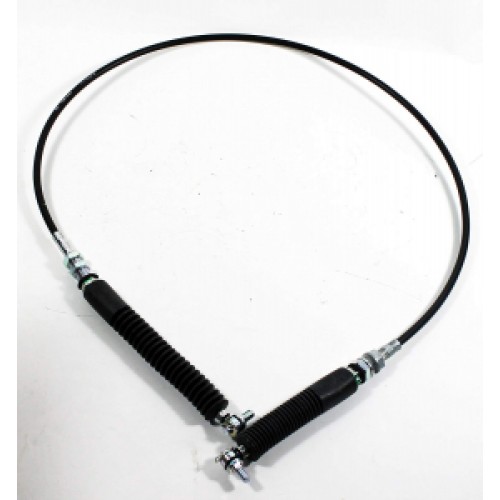 But on the other hand, with active driving along a route with variable difficulty, riding a CVT will be a little less convenient.
But on the other hand, with active driving along a route with variable difficulty, riding a CVT will be a little less convenient.
For example: you are driving on a flat packed dirt road on H and you see a large stretch of muddy road ahead with deep mud (or a steep hill, or bumps, or stones). You will have to come to a complete stop and shift to L, drive through mud, and when you get back on a dry road, come to a complete stop again and shift back to H. , like motorcycles, and a manual clutch lever on the handlebar on the left.
The foot lever device can be of two types:
The shift itself is carried out in the same way as on motorcycles:
